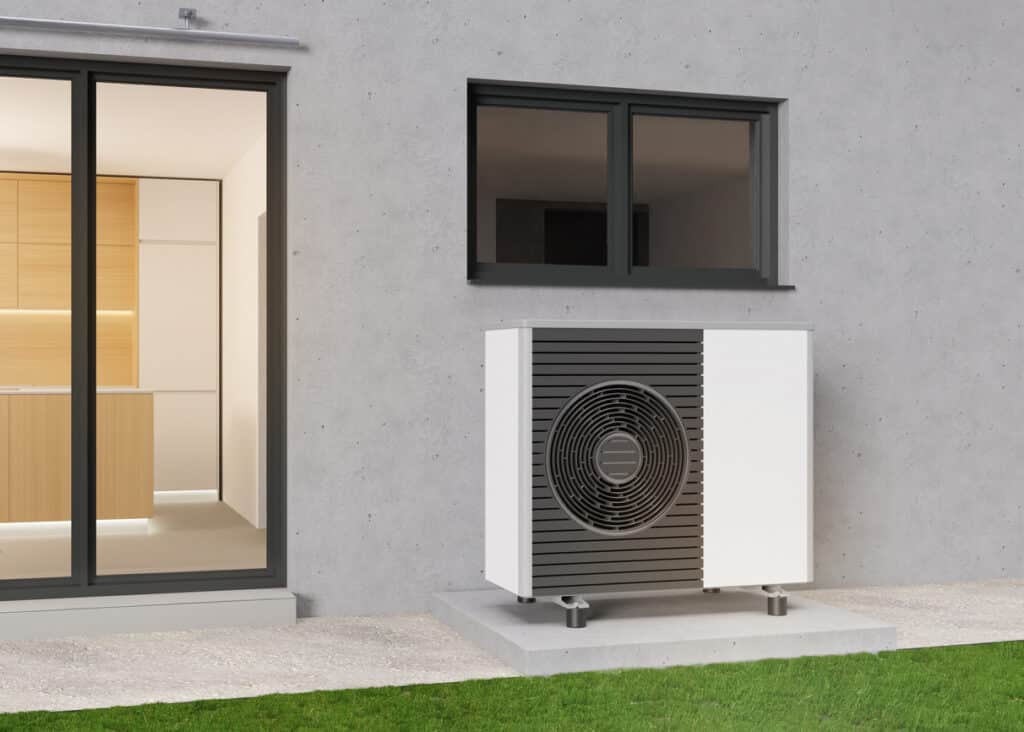A heat pump is a device that helps control your home’s temperature by transferring heat from one area to another. It works similarly to an air conditioner, but instead of cooling the air, it pumps warm air into the house during cold weather and pumps hot air out when it’s hot outside. The following is an overview of how heat pumps work.
1. Heat Transfer
Heat pumps use a refrigerant fluid to transfer heat from one area to another. This process is called the “heat exchange,” and it works by having two coils, outdoor and indoor coils, connected by a compressor. The outdoor coil absorbs heat from the outside air while the indoor coil releases it into the home.
Additionally, the refrigerant inside the heat pump absorbs heat from the outside air and carries it indoors. The compressor pressurizes the refrigerant, raising its temperature, which is then released into your home’s air.
2. Heating and Cooling Modes
When the heat pump is in heating mode, it pulls warm air from outside and brings it into your home. It then pumps the heated air through vents inside the house so you can stay warm during cold weather. In cooling mode, the heat pump works reverse: it takes the hot air from your home and sends it outside. This helps to keep your indoor temperature cool and comfortable.
3. Evaporation and Condensation Process
The heat pump also uses the process of evaporation and condensation to help move heat around. This means that when the refrigerant passes through the outdoor coil, it evaporates from a liquid state into a gas. It then moves to the indoor coil, condensing back into a liquid state, releasing its heat.
During this process, the compressor keeps the refrigerant moving between these coils. This allows the heat pump to efficiently transfer heat, resulting in a comfortable climate control system for your home.
4. Absorption Process
The absorption process is another way heat pumps can transfer heat. This process uses an absorbent material, such as ammonia, to help capture heat from the outside air and move it indoors. The absorbed heat is then released into the home in a similar fashion to the evaporation/condensation process described above.
Through the absorption process, heat pumps can remain efficient even in extremely cold temperatures. This makes them an ideal heating system for homes in areas that experience extreme weather conditions.
5. The Dehumidification Process
Heat pumps don’t just keep your home comfortable. They also help make the air inside your house more pleasant. This is done through a process known as dehumidification, which helps remove excess moisture from the air. This reduces humidity and makes breathing easier indoors, creating a healthier living environment.
Dehumidification happens when the heat pump draws in warm, moist air and cools it down. As the air passes through the indoor coil, its moisture condenses and is released outside. This process helps reduce humidity levels inside your home, promoting a healthier living space.
Heat pumps are a great way to control the temperature in your home. Depending on the season, they efficiently transfer heat from outside to inside or vice versa. Additionally, they can reduce humidity levels in your house for improved comfort and air quality. With all these benefits, it’s no wonder why so many people choose heat pumps as their climate-control system of choice.
At Prime HVAC, we provide heat pump services, including repair and maintenance, to ensure your system is always running smoothly. Contact us today to schedule an appointment.

